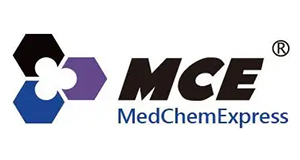BAPTA (tetrapotassium), CAS 73630-08-7
BAPTA (tetrapotassium), CAS 73630-08-7
Artikelnummer
MEXHY-100168B-250
Verpackungseinheit
250 mg
Hersteller
MedChemExpress
Verfügbarkeit:
wird geladen...
Preis wird geladen...
Product Description: BAPTA tetrapotassium is a selective chelator for calcium. BAPTA, as calcium indicator, has high selectivity against magnesium and calcium. BAPTA tetrapotassium is widely used as an intracellular buffer for investigating the effects of Ca2+ release from intracellular stores or influx via Ca2+-permeable channels in the plasma membrane. BAPTA tetrapotassium can also inhibit phospholipase C activity independently of their role as Ca2+ chelators[1][2][4].
Formula: C22H20K4N2O10
References: [1]R Y Tsien, et al. New calcium indicators and buffers with high selectivity against magnesium and protons: design, synthesis, and properties of prototype structures. Biochemistry. 1980 May 27;19(11):2396-404. /[2]Roger C Hardie, et al. Inhibition of phospholipase C activity in Drosophila photoreceptors by 1,2-bis(2-aminophenoxy)ethane N,N,N',N'-tetraacetic acid (BAPTA) and di-bromo BAPTA. Cell Calcium. 2005 Dec;38(6):547-56. /[3]M B Collatz, et al. Intracellular calcium chelator BAPTA protects cells against toxic calcium overload but also alters physiological calcium responses. Cell Calcium
CAS Number: 73630-08-7
Molecular Weight: 628.79
Compound Purity: 99.45
Research Area: Others
Solubility: H2O : 125 mg/mL (ultrasonic)
Target: Phospholipase
Formula: C22H20K4N2O10
References: [1]R Y Tsien, et al. New calcium indicators and buffers with high selectivity against magnesium and protons: design, synthesis, and properties of prototype structures. Biochemistry. 1980 May 27;19(11):2396-404. /[2]Roger C Hardie, et al. Inhibition of phospholipase C activity in Drosophila photoreceptors by 1,2-bis(2-aminophenoxy)ethane N,N,N',N'-tetraacetic acid (BAPTA) and di-bromo BAPTA. Cell Calcium. 2005 Dec;38(6):547-56. /[3]M B Collatz, et al. Intracellular calcium chelator BAPTA protects cells against toxic calcium overload but also alters physiological calcium responses. Cell Calcium
CAS Number: 73630-08-7
Molecular Weight: 628.79
Compound Purity: 99.45
Research Area: Others
Solubility: H2O : 125 mg/mL (ultrasonic)
Target: Phospholipase

 English
English









